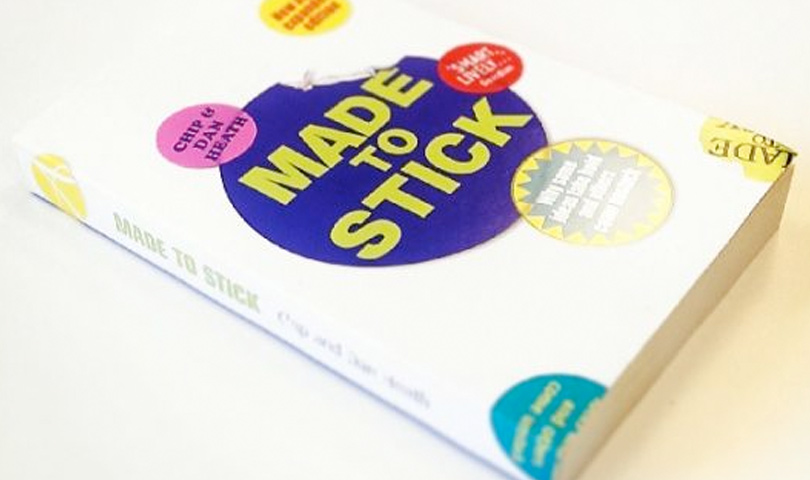What Makes A Story Stick?
SHARE
Pete Marcus
05 Aug 2013
This month Harvard’s book club discussed Made to Stick, by Dan and Chip Heath. The book is designed to answer a fascinating question – why do some ideas or stories stick in everyone’s minds, while other things, even if they’re very important, completely fail to lodge in our memories?
The book opens with a great example of the famous urban legend about a man who wakes up in an ice bath to find his kidneys have been removed . . . Why is that story so memorable, even when it’s not true? And why does something true and important, like the recommended daily allowance of, say, salt or alcohol units, remain so difficult to remember?
It’s a challenge we all come across in our daily jobs as PR people. How do we identify the fact or message that will strike a chord with people and perhaps change their minds? Or how do we take something which, on the face of it, might be worthy but a little dull, and make it compelling?
Made to Stickis structured around six key concepts that the authors believe make stories “sticky”. Find and apply these concepts to what you want to communicate, and you’ll create your very own sticky story, making it much more effective and successful.
The six concepts are: Simple, Unexpected, Concrete, Credible, Emotional and Stories. (You might have noticed the initials of these concepts spell out SUCCES – see what they did there?) In other words, find the core of your message, give it an unexpected twist, make it rooted in something real and tangible, back it up with something believable, appeal to people on an emotional rather than analytical level, and use a story to bring it to life. It’s rare to be able to combine all six of these elements in a single message, but the more of them you can bring to bear, the better. (For example, the ice-bath-and-kidneys story is unexpected, full of concrete details, highly emotional and built around a supposedly credible story from a “friend of a friend”. Meanwhile the salt RDA is delivered as a plain number and nothing more, so no wonder we don’t remember it.)
It’s a brilliantly simple formula and one that PR people tend to apply without thinking about it on a daily basis anyway. ButMade to Stickis a valuable reminder about just how important these factors are in making a message succeed in the ever-more crowded marketplace of ideas, and it has some great case studies of how the six principles were used successfully that inspired a lot of thoughts amongst the group about how we could use these principles for our clients.
One example is in using “gap theory” to make our stories more intriguing for audiences. Gap theory is based on a simple premise – a gap in our knowledge causes a sense of pain, like an itch that we want to scratch. If we only know half of something, we’re on tenterhooks to know the rest. This is the principle that makes people obsessed with crosswords or want to read to the end of even the trashiest whodunnit. So if we want to make a message compelling and to cut through to audiences, you can use the gap theory to get their attention.
We could even use it in pitches. Simply start by posing a question or a hypothesis: “We know 16-24 year olds love your product, but they aren’t buying enough of them – so we set out to find out why . . . and in the rest of this pitch we’ll explain how we discovered the answer.”
Now wouldn’t that be a much better way of keeping a prospective client interested than promising them yet another PowerPoint presentation to stare at?

